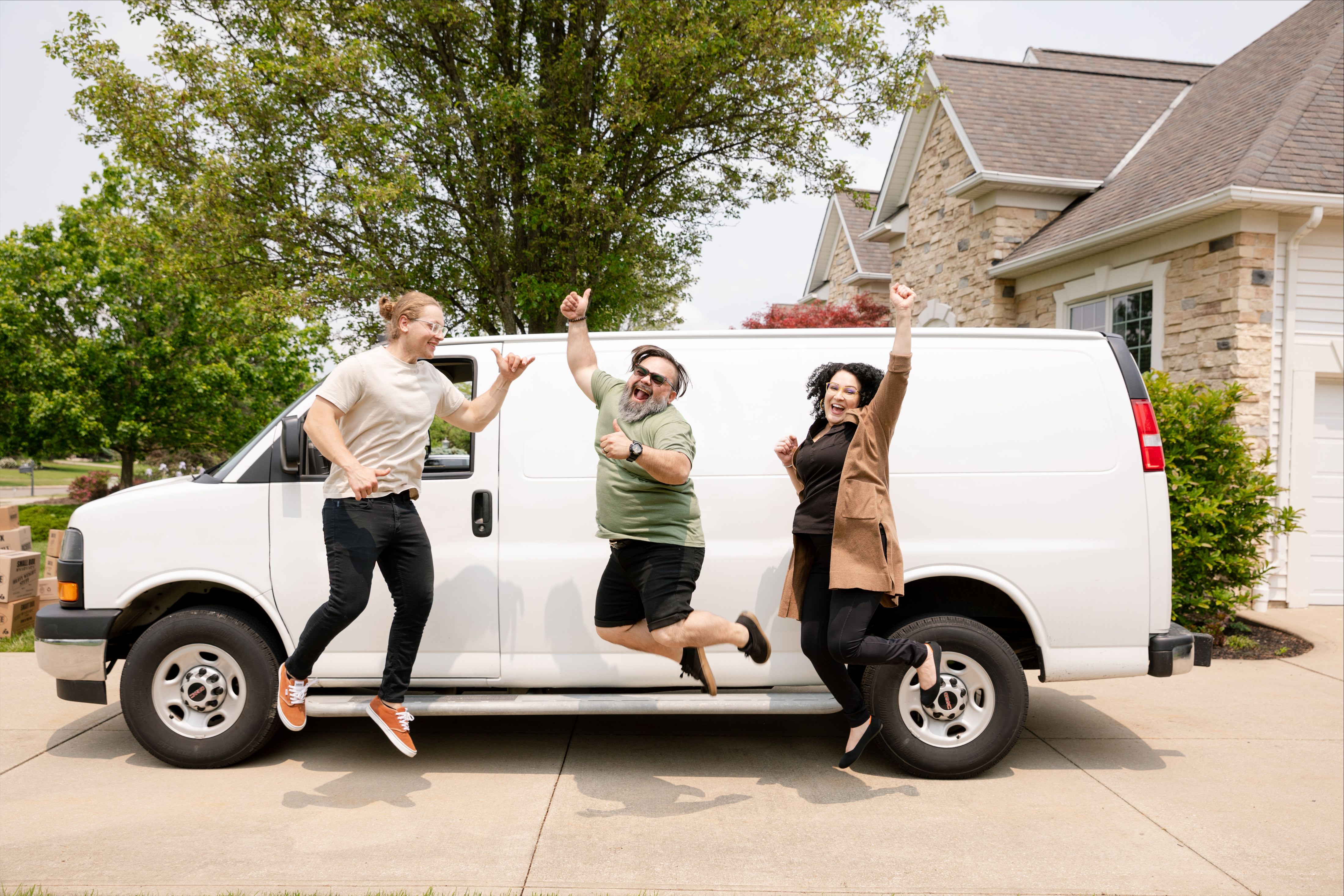Packing for a move doesn’t have to be overwhelming. The best way to pack is to stay organized, use the right materials, and tackle one area at a time. Start early, label everything clearly, and keep the essentials close by. With a bit of planning, you’ll make the process smoother—and save yourself a lot of stress on moving day.
Whether you're moving across town or heading to a new home several states away, packing smart means less chaos and fewer surprises. We’ll walk you through every step of the packing process, with tips tailored to different room types, moving distances, and situations. We’ll also cover the best supplies to use, techniques to keep your items safe, and ways to make unpacking easier once you arrive.
Let’s make your move a little less hectic—and a lot more manageable.
Pre-Packing Prep: Set Yourself Up for a Smooth Move
Before the first box gets taped, a little preparation goes a long way. The more organized you are upfront, the easier your packing process will be.
1. Create Your Moving and Packing Checklists
Start by making a moving checklist that includes important dates, tasks, and deadlines. Then break it down further with a packing checklist—list what to pack first, what to leave for last, and any specialty items that might need extra attention.
2. Gather the Right Supplies
Stock up on packing supplies early. You'll need:
- Packing tape
- Packing or tissue paper
- Plastic wrap
- Cardboard boxes in various sizes
- Wardrobe boxes for clothes
-
Plastic bins for storage items
- Specialty boxes for TVs, dishes, and mirrors
Don’t forget labels or markers to clearly label boxes. Sorting by room and contents helps your future self stay sane when unpacking.
3. Declutter Before You Pack
Go room by room and sort through what you really need. Group similar items together and donate, recycle, or toss anything that doesn’t belong in your new home. Less stuff means fewer boxes—and that’s always a win.
4. Prep Your Essentials Bag
Set aside tote for moving day essentials. This should include important documents, chargers, snacks, medications, toilet paper, and a few cleaning supplies. Keep this bag with you rather than loading it into the moving truck.
5. Make a Plan for Fragile or Valuable Items
Think ahead about how you’ll protect delicate items, electronics, or anything irreplaceable. Use extra protection like soft goods or foam inserts, and consider transporting these in your own vehicle.
Being prepared from the start helps avoid last-minute panic and gives you more control over the moving process.

Room-by-Room Packing Tips to Stay Organized and Efficient
Packing room by room helps prevent confusion, keeps items grouped together, and makes unpacking at your new place much easier.
Living Room
Use plastic wrap or original boxes for electronics. Protect furniture with pads, bundle cords in plastic bags, and pack books or decor in smaller boxes to manage weight.
Bedrooms
Hang clothes in wardrobe boxes to skip folding. Pack bedding and pillows in plastic bins or bags—they also cushion delicate items. Label personal containers clearly.
Kitchen
Wrap dishes with packing paper, stack plates vertically, and pad breakable items with extra protection. Group similar items, avoid heavy loads, and clearly label all boxes.
Bathroom
Use zip-top plastic bags for toiletries to prevent leaks. Keep toilet paper, hand soap, and a towel accessible. Store loose items in small bins.
Garage & Storage
Pack tools and hardware in plastic bins or heavy-duty boxes. Tape sharp items securely and layer boxes with heavier items on bottom, lighter items on top.
Helpful Packing Tips
Here are a few smart strategies that can make your packing process even smoother:
Bundle Wrap Method
Wrap small items inside larger soft items like towels or bedding to save space and add padding.
Box-in-Box Method
Place a smaller box of valuables or breakable items inside a larger one, filling the space between with packing paper or tissue paper.
H File Method
When sealing a cardboard box, run one strip of packing tape down the center seam and one across each end seam for extra hold.
Color Coding
Use colored labels or markers for each of your different rooms—kitchen in red, bedroom in blue, and so on.
Plastic Bag Trick
Store hardware (like screws for your bed frame) in a labeled plastic bag, and tape it to the item it belongs with so it doesn’t get lost.
Small tricks like these help you stay organized and protect your belongings throughout the move!
Ready to Pack Like a Pro?
Grab our FREE Packing Checklist and make sure nothing gets left behind on moving day!
Download the ChecklistLocal to Long-Distance: Packing Tips by Moving Distance
Not all moves are created equal. Packing for a long-distance move comes with different challenges than moving down the street. Whether you're relocating just a few blocks away or heading across the country, these tips will help you pack smart based on the distance involved.
If You're Moving Nearby
Short-distance moves are more flexible but still need planning. If you're making multiple trips, you can skip some heavy-duty steps—but not all.
-
Use open-top containers like laundry baskets or plastic bins for clothes and soft goods.
- Wrap breakable items with care, though double-boxing may not be necessary.
- Keep valuables like important documents and electronics with you, not in the moving truck.
If You're Moving Across Town
With a one-time load and unload, efficiency matters.
-
Use cardboard boxes in various sizes—heavier items in smaller boxes, lighter items in larger ones.
-
Cushion delicate items with plastic wrap or packing paper, and seal everything well.
- Label boxes clearly by room to simplify setup in your new home.
If You're Moving Long-Distance
For longer moves, protection and organization are key.
- Use original boxes when available, and add extra protection like tissue paper or foam.
- Mark fragile items and specialty boxes clearly.
- Keep a bag with essentials like medications, devices, and important documents on hand.
- If using a moving company or professional movers, ask about coverage for breakables.
No matter the distance, packing with care will make your move into a new place feel more manageable. And if you’re unsure about where to begin, the next section will help you pack room by room with ease.
Unpacking and Settling Into Your New Home
Once the boxes are off the truck and in your new home, it might feel tempting to slow down, but a little momentum here can go a long way. Unpacking with intention helps you get settled faster and avoid living out of boxes longer than necessary.
Start With the Essentials
Open your first-night box and set up basics like toiletries, linens, and phone chargers. Get your bed set up so you have a comfortable place to rest after a long day. From there, move on to the kitchen and bathroom, where functionality matters most.
Unpack Room by Room
Just like you packed by room, unpack that way too. Focus on completing one space at a time to avoid half-finished areas and clutter across the entire home. Use your labeled boxes and color-coded system to make this easier.
Don’t Forget the Storage Spaces
Take stock of your storage space early on. This includes closets, shelves, and cabinets. Unpacking with these areas in mind helps avoid the temptation to stash things in piles just to get them out of the way.
Why Moving Cart Makes Packing Easier
When it comes to packing, the right supplies can make all the difference. At Moving Cart, we make it easier to pack with confidence—no guesswork, no scrambling for materials.
Whether you’re preparing for a long-distance move or just relocating to a new spot across town, our curated moving kits and individual packing supplies are designed to work for your space, your timeline, and your budget. From wardrobe boxes and packing paper to glassware protection, specialty boxes, and more, we’ve got everything you need to protect your belongings and keep the packing process on track.
Our goal is simple: help you arrive at your new home feeling prepared, organized, and ready to settle in.





Leave a comment
This site is protected by hCaptcha and the hCaptcha Privacy Policy and Terms of Service apply.